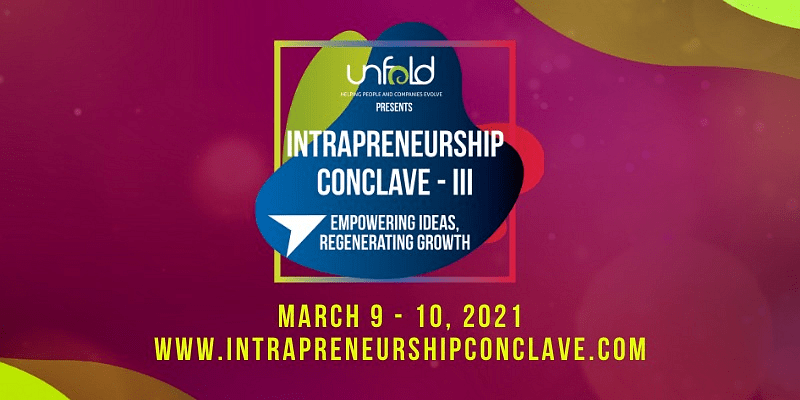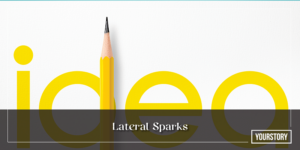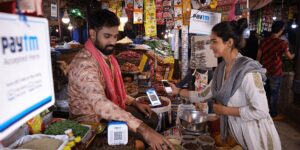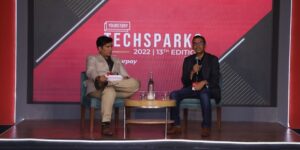In this second preview article on the upcoming annual Intrapreneurship Conclave, we share experiences on enterprise innovation practices for the pandemic era and beyond. See Part I here, as well as our writeup on the 2019 edition and 15-part article series on the CII Global Knowledge Summit.
The two-day virtual conclave features two masterclasses, panels, and keynotes by speakers from Tata Sons, NITI Aayog, Morgan Stanley, Schneider Electric, MetLife Global Operations, Manipal Health Enterprises, Cisco, Tamara Leisure Experiences, MapMyGenome, WPP, GroupM, Xoxoday, and the Indian Music Experience.
See also YourStory’s Book Review section with takeaways from 300 books on innovation, creativity, entrepreneurship, and digital transformation.
As the media partner for the Intrapreneurship Conclave 2021, YourStory publishes this preview article with valuable insights on innovation culture by Jyothi Pradhan, CEO of Kurlon; Fathima Benazir, Chief Scientific Officer and Co-founder of Azooka Labs; and Aparna Kongot, Head of User Experience Design, Enterprise Products, SAP Labs.
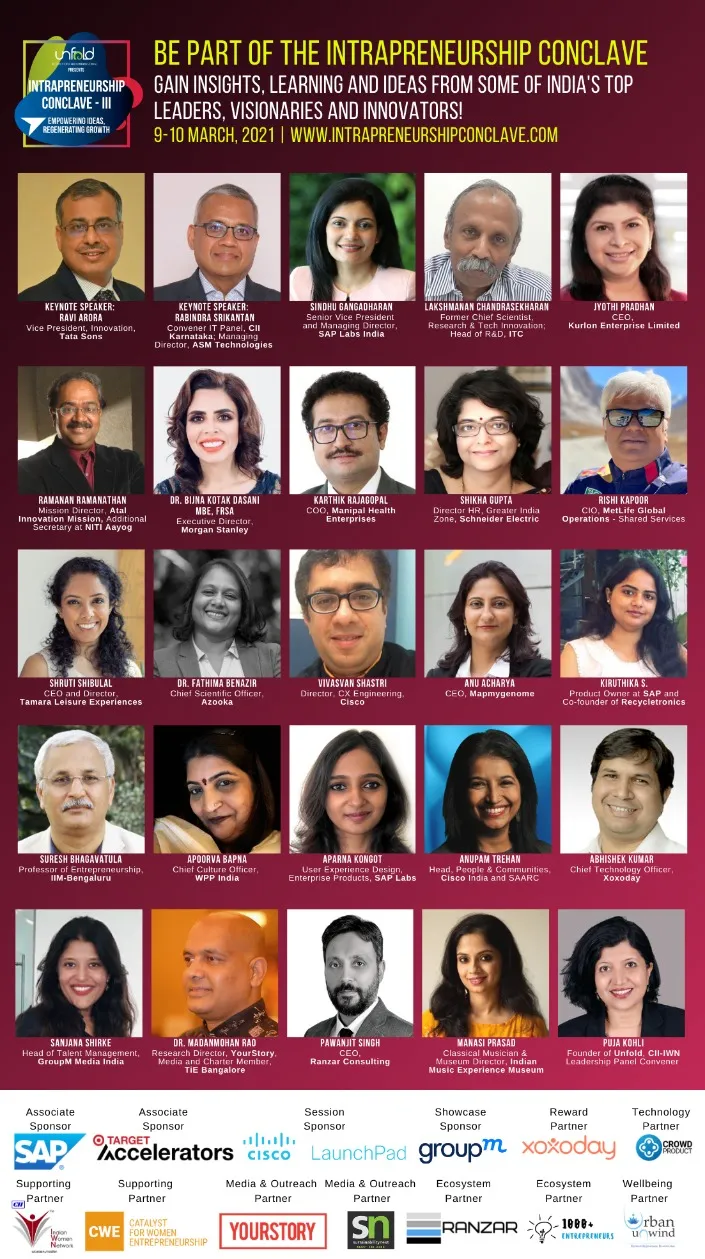
I. Morale and motivation
“The unprecedented pandemic which forced a lockdown was something that nobody was prepared for. Kurlon, like many 20th century companies, had a culture of in-person working and face-to-face interactions,” explains Jyothi Pradhan, CEO of Kurlon, in a chat with YourStory.
Though the company had started exploring work from home in 2019, it was limited to just a few roles in the organisation. “But in early March 2020, as some parts of the country began to have restrictions in people movement, it forced us to look at enabling remote working for the entire organisation,” Jyothi recalls.
This actually helped them stay connected as an organisation through the entire lockdown. “From the very beginning of the lockdown, we kept all communications open and were very transparent on all the decisions leadership took,” she says.
Work from home as such was a new concept. “Combined with the fact that the rest of the family was at home and there was a lot of anxiety, especially during the first days, the leadership realised we had to be sensitive to our team members,” Jyothi says.
Since health was top-most on everyone’s mind, HR came up with a very creative way of having a human network for employees to be responsible for each other. “If any message needed to be passed on, we could quickly connect the entire organisation in less than 15 minutes,” she recalls.
“Apart from the daily check-ins and virtual learning sessions, we had two weekly video calls for the entire organisation. One was to keep everyone updated on the business front, and one to enable a fun interaction that included the entire family,” Jyothi explains.
The marketing and HR teams planned fun Friday activities that became the highlight every week with quizzes, contests, and prizes. “This concept of work-life integration was appreciated at every level in the organisation, and gave the confidence that no matter what we were there for each other,” she proudly says.
“Prior to COVID-19, we were working only on research use products for life sciences. We then understood that COVID-19 was the right time to launch our diagnostics product range,” recalls Fathima Benazir, Chief Scientific Officer and Co-founder of deep-science startup, Azooka Labs.
“Employees were motivated as it was a chance to contribute our part towards the largest challenge faced by India and humanity,” she adds.
“With all the uncertainties that the new world order brought, SAP was quick to recognise and offer an Are you OK mental health initiative. It provided 24/7 helpline support to all employees and their direct family members,” recalls Aparna Kongot, Head of User Experience Design, Enterprise Products, SAP Labs.
A quick-access portal was launched to offer additional live sessions and learning resources. “Expert videos were published on topics like anxiety disorder and sleep disorder, along with employee motivational stories,” Aparna adds.
Resources and toolkits on understanding and handling situations like domestic violence were also provided. “Employees could also sign up for monthly newsletters on this topic,” she says.
With WFH (Work From Home) becoming the norm, SAP set up a support plan that allowed employees to reimburse expenses incurred in setting up a home office. “That came as a big relief for many employees. It helped ensure that productivity and well-being did not suffer because of the lack of a comfortable work set-up,” Aparna recalls.
SAP’s senior leadership team has kept an open channel for communication that allowed employees to raise their concerns. “They ensured that every topic was responded to in the best way possible,” she says.
Aparna herself represented a UX Design Forum as part of a program sponsored by SAP Labs at Bangalore (co-incidentally during the pandemic). A two-day UX summit was held virtually, and included talks, case studies and a virtual art exhibition. The experience of serendipitous networking in a physical event or in cafeterias was replicated online as well.
“We tried to bring this random ‘bumping’ into people via the virtual meetup, where people were randomly assigned to breakout rooms in pairs for 10 minutes. They have a 1:1 chat, and this is repeated all over again after 45 minutes,” Aparna explains.
This way, each person could connect with five other people. “This has been conducted with global teams as well as local teams in SAP, and it has been a big hit,” she proudly says.
The online forum has now become a knowledge-sharing and networking platform. “It surfaces the achievements of designers to the larger organisation and inspires the community further,” Aparna adds.
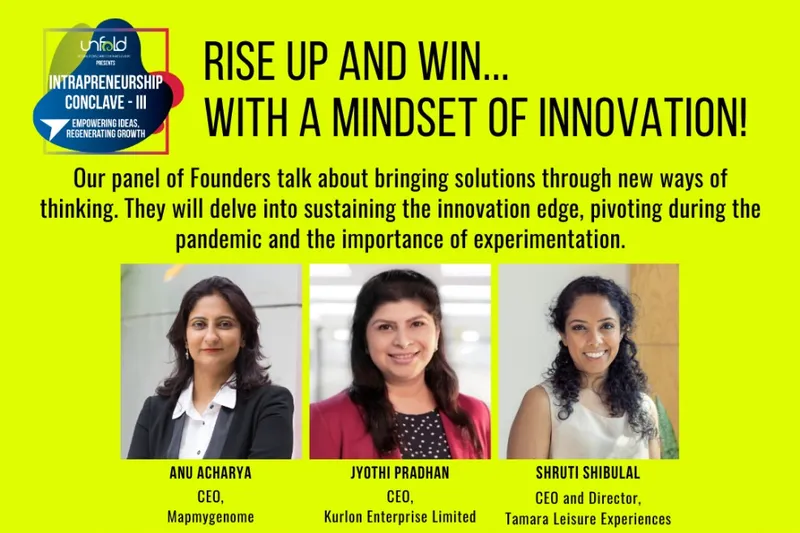
II. Innovation during the pandemic
A number of companies have tapped internal and external crowdsourcing of ideas during the pandemic.
The pandemic gave Kurlon a lot of time to reflect on the business as a whole. “We saw this as a great opportunity to enable thought leadership within the teams. We had virtual brainstorming sessions and discussions involving cross functional teams from all levels of the organisation,” Jyothi of Kurlon recalls.
Uncertainty about when the markets would open was on everyone’s mind. “Teams came up with very interesting concepts of what we could do if the pandemic continued for the rest of the year,” she says, describing three of the ideas.
#ApnaGharApnaStyle was a virtual contest for consumers that kicked off in May 2020. “This first of its kind competition challenged consumers to redecorate their homes at the time of peak lockdown, giving them a welcome respite from the daily routine,” Jyothi explains.
Another idea was to take advantage of talented students who were at home. The Gamechangers programme was designed as a completely remote 12-week internship programme for students to work closely with the Kurlon team.
A third idea was creating a home office product line under the Home Komforts brand. It was triggered because of the new WFH culture.
Even after the COVID19 lockdown, there was a challenge in attracting talent as there was a mindset of uncertainty in joining a startup, Fathima of Azooka recalls. “As we were not able to hire, we hired volunteers and part-time employees to complete milestones,” she says. One such milestone was the launch of RNA Wrapr, a molecular transport medium for transporting the virus.
“During the pandemic, when SAP announced a call for ideas to tackle the various challenges faced due to the pandemic, we had periodic virtual brainstorming sessions to put forth several proposals,” Aparna of SAP recalls.
Her team’s pre-pandemic coffee sessions with lively debates had already built a spirit of solidarity. “Now, our days start with a brief virtual coffee chat that helps us continue that work culture,” she describes.
Aparna’s team has found ways to remotely conduct design thinking, user research, and user tests. “These are done virtually using online user recruiting and collaboration tools to stay connected to our customer’s needs,” she says.
The trainers converted offline courses to online, to ensure annual learning offerings were not disturbed. “Our management also ensured that the global design teams stay motivated and connected by having weekly slots for casual conversations that helped in networking,” Aparna explains.
“We even had a virtual after-work party with good food, games, and music! It would be fair to say that we have almost managed to recreate the pre-pandemic world in a virtual setup,” she proudly says.

III. Innovating for the road ahead
Thankfully, the conversation in many countries is moving away from lockdown to vaccination and beyond. The three speakers shared individual and organisational steps ahead.
Fathima of Azooka says one important lesson from the pandemic era that is being carried forward is the importance of customer conversations. “We understood that the business, budgets, and processes have changed. So we spoke to our customer base and to understand the new changes, processes, and problems they are facing,” she recalls.
“More than innovative ideas, solving ten nagging problems brings more joy to customers,” Fathima emphasises.
At Kurlon, innovation is not only part of the vision statement, it is also part of the company’s values. “Specifically, the pandemic showed us how companies who adapted stayed abreast though innovation not only in products, but also in systems and processes,” Jyothi of Kurlon recalls.
“Kurlon 2.0 is the new culture at Kurlon. That is pushing our team members to change their mindset from accepting what is, to what can be. Ideas are deliberated, tested, and executed,” she explains.
Sometimes, the ideas meet with success, at other times they yield learnings. “Teams are excited to see their ideas come to life. As an organisation, it is showing us new opportunities that we didn’t think existed,” Jyothi says.
“Feeding curiosity and investing in learning has been a significant source of inspiration to me personally, through the pandemic. Through structured curriculums, experiments, and reading books, I’ve made the time to pursue areas that I have always been curious about,” explains Aparna of SAP.
These areas include social psychology, basics of programming and machine learning, traditional Japanese culture, and even baking her favourite desserts, she describes. “These learnings have inspired me to explore if there could be intersections and cross learnings with which we can advance our understanding of user experience design,” Jyothi enthuses.
She has always found it rewarding to share her learnings with her peers. “One of these rewards has been to discover a colleague with similar interests, collaborate, and jointly publish a paper at a premier international HCI conference,” she proudly says. The paper proposes new ways of envisioning the user experience of business software, inspired by traditional Japanese culture.
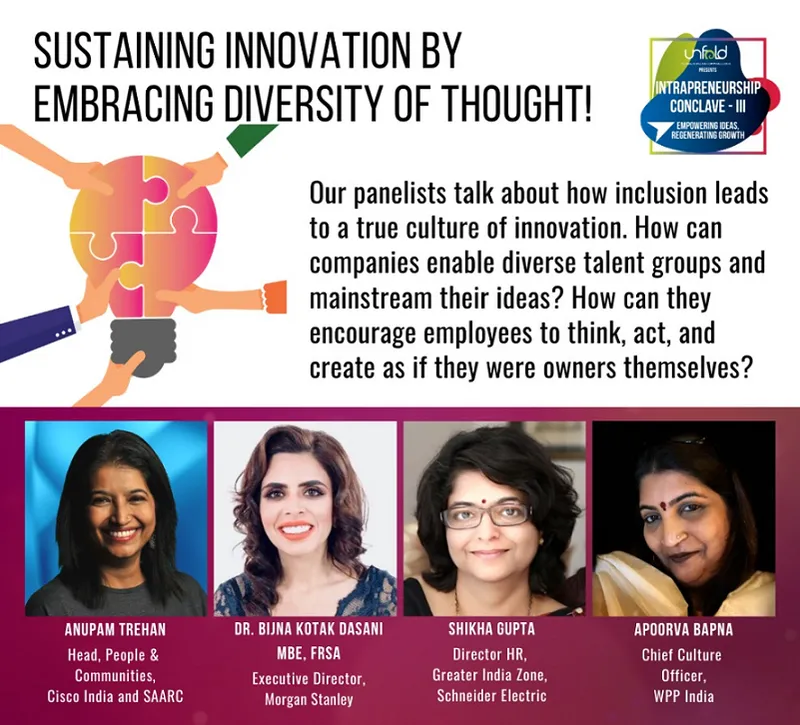
IV. Tips and recommendations
The three speakers also shared advice for organisations on how to ensure a healthy culture of debate, experimentation, and innovation.
“I believe that a right mindset will go a long way and works wonders when an idea is set into motion,” Aparna of SAP affirms. She offers the following three tips for innovators.
Embrace imperfections: When you have an idea, choose your instinct over self-doubt. There are hidden opportunities even in incomplete or unsuccessful ideas.
Celebrate diversity: In innovation, there is an element of discovery by chance and building on ideas together. An open mind to diverse perspectives, irrespective of who offers them, is often the right mindset innovations call for.
Be ambitious: Futuristic thinking and being aware of what the best players in the area have accomplished can bring a different light to view ideas and vision.
Jyothi of Kurlon advises leaders to keep the spirit of innovation alive. “Every company had its birth in innovation, a time when the founder asked Why not? But over the years, we standardise everything related to that original idea – to the level that it becomes predictable and there is no longer any guesswork left in it,” she laments.
“And let’s be honest – we only want to see success, not failure. But innovation is all about the what if’s, all about the guesswork, all about the unpredictable,” Jyothi emphasises.
“The only way to innovate is let the creativity flow where it must,” she advises. She sums this up in three tips.
“Listen, listen, and listen some more. Listen to your team members as they detail out their problems. Listen again, as they often also have solutions to the same problems. Give them confidence as you listen to them a third time as they outline details of their plan of execution,” Jyothi evocatively describes.
Fathima of Azooka says she has always tried to keep Azooka a fun place apart from the deep science, to keep the creative spark burning. She sums up with the following three activities and tips:
Team Lunch: Conversations during lunch and tea breaks bring out what employees wished for and some of their personal problems. Try to eliminate small discomforts so that they are happy.
Fun Day: Azooka catches up on Saturdays with school students for the love of science, movies, and non-work-related activities for the team to blend together.
No ‘Specials’ for Founders: Azooka founders try to comply with all the rules that have been set for team, so that the team is always the hero.

